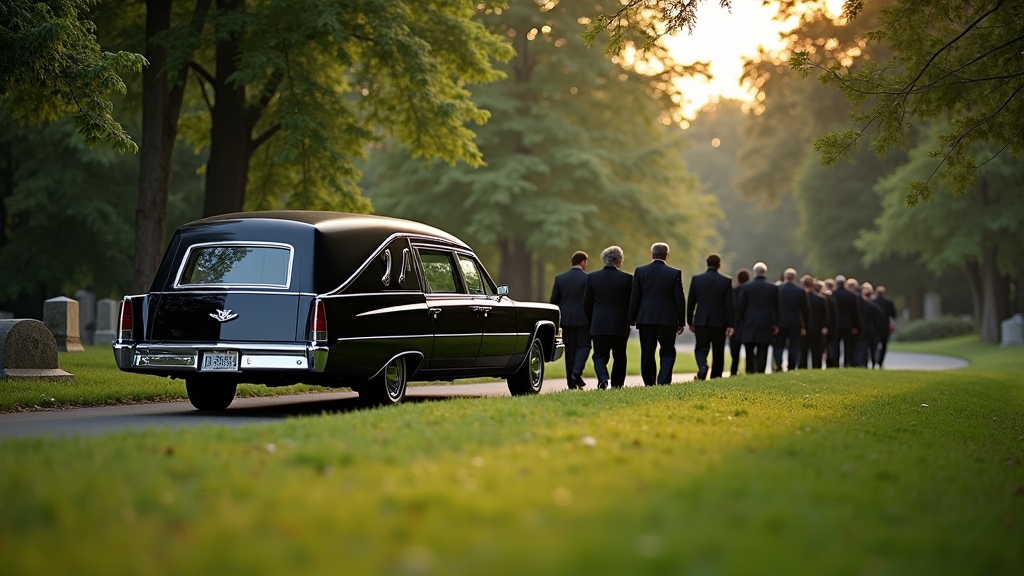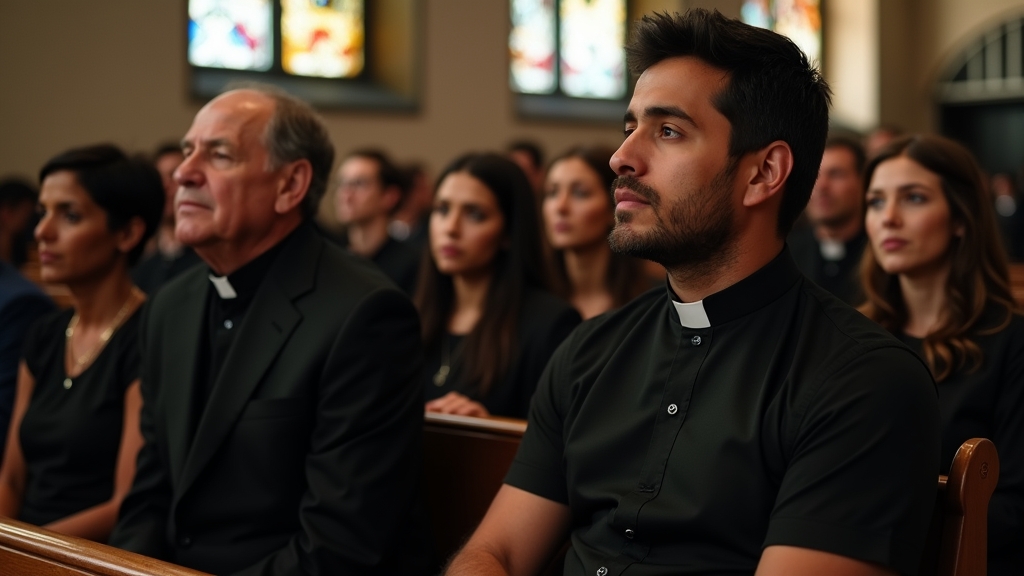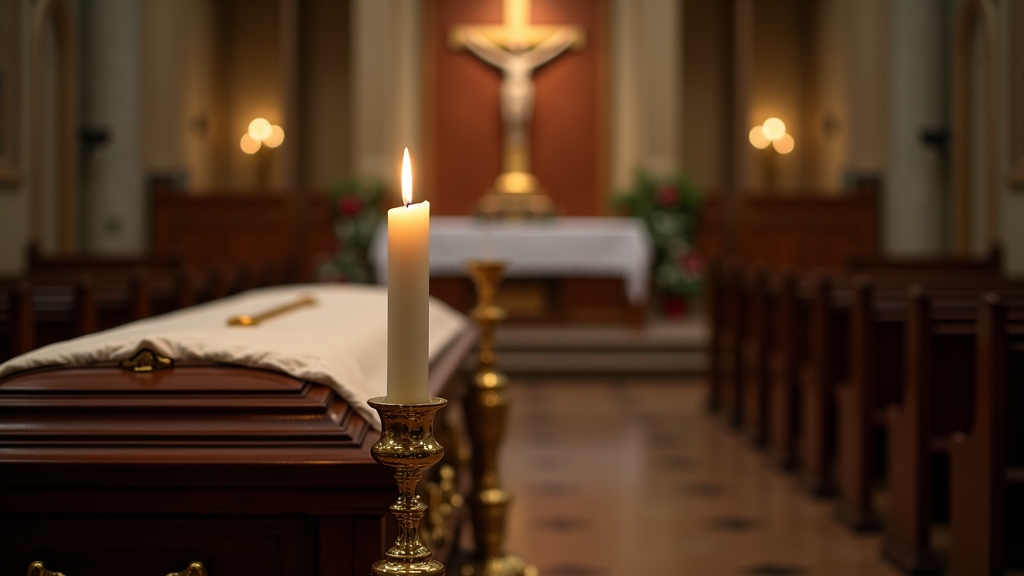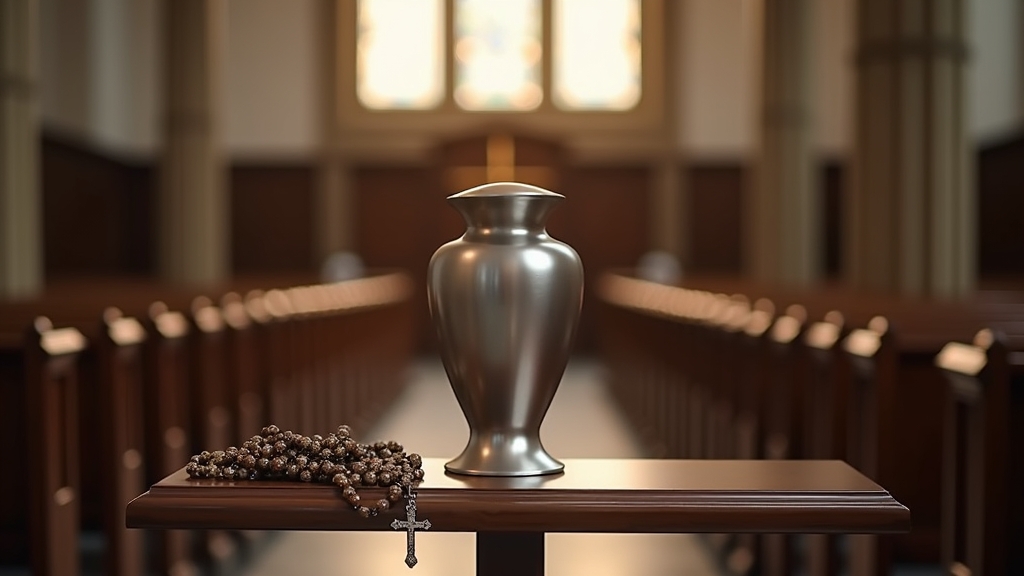Catholics, just like every other Christian denomination, believe in the afterlife. As a result, their funerals are centered on prayers for the deceased’s soul. A Catholic funeral service offers hope during one of life’s darkest moments. It is an expression of gratitude to God for the gift of the deceased person’s life. It also provides comfort and hope to those who have been left behind.
This guide outlines everything you should know about planning a catholic funeral.
Funeral Services for Catholics

Multiple ceremonies are held in honor of the deceased in the Catholic funeral custom. A vigil service, sometimes known as a wake or a rosary service, is typically held first. The funeral Mass will follow, and then a graveside committal.
Each section has its rules and rituals, and people may attend one or all of them, depending on their relationship to the deceased.
Catholic Funeral Etiquette
When you arrive at a catholic funeral or wake, the deceased’s relatives may be greeting well-wishers outside. If that’s the case, share your condolences outside before going inside to pick a seat and wait calmly for the service to begin.
During the burial Mass, follow the priest’s lead. Typically, you should avoid doing anything to attract attention at a funeral. Sitting silently is always the best option, and don’t record the service on your phone or any other device.
After the funeral service, family members and mourners will take the casket to a hearse. Pay attention to instructions on where the casket will be buried.

What to Wear
People should dress appropriately at Catholic funerals because the atmosphere is often solemn and respectful.
Mourners typically dress in black semi-formal clothes. A suit and tie, something semi casual should be worn by men. A black skirt, dress, or pantsuit is appropriate for women. If black clothing is not available, participants should dress in their darkest semi-formal attire.
Typical disposition

Because it is also a moment to focus on Jesus’ crucifixion, resurrection, and the argument that death brings significant value to life, the mood at a funeral is solemn or solemn. The Catholic funeral candles (Paschal candles) are placed close to the coffin to honor the departed soul.
Acceptable presents
The most common and well welcomed present is sympathy cards. If a floral gift is presented, it is usually sent along with a condolence card by a professional florist.
It is also acceptable, but not required, to provide a donation to the family to cover funeral costs. The family could consider a donation to the decedent’s chosen charity in place of flowers.
Checklist for Catholic Funerals
Here’s a checklist to follow to prepare for a traditional catholic funeral.
1. Inform the Priest of the Church About The Funeral Preparation

This is typically the first step to preparing for a funeral. You’ll need to contact the priest of your favorite Church and collaborate with the Church’s priest to iron out the details like music, scripture, and deliver the eulogy. Early on, contact the Church, and they will connect you with the right people to speak with.
Keep in mind that the priest and personnel deal with funerals regularly. They will gladly assist if the person is a member of their parish. Don’t hesitate to speak with them if you have any problems.
2. Select a funeral director or funeral home
Consider hiring a funeral director or working with a funeral home to plan a Catholic burial. They will appropriately care for the remains of your loved one. They will also take care of extra arrangements, such as scheduling transportation for your loved one, procuring flowers, planning awake, and working with the Church on essential matters like funeral time.
Check to see whether your loved one specified anything in their will. Otherwise, you can inquire which funeral home the Church where the funeral will be held prefers.
3. Outline Your Budget
Budgeting isn’t something you want to think about right now, but you should think about it.
A catholic burial can cost from $5,000 to $15,000 or more. Your budget should cover funeral home services, flowers, transportation, bulletins distributed at the funeral, the coffin, and cremation. In most cases, you may have to pay a small fee to each clergy and personnel and the Church if the person wasn’t a church member.
Most funeral houses would wait for payment if the person had an estate or a life insurance policy, as long as proof is provided ahead of time. Otherwise, you may need to make your selections for your loved one as cost-effective as possible. Talk to family members about how they may help with the funeral.
4. Choose Between Cremation or Burial

You have to decide whether the deceased should be buried or cremated. Since 1963, the Catholic Church has permitted the cremation of a body. Cremation is frequently less expensive than burial in a cemetery. Practicing Catholics can choose cremation if the deceased requests it or if it is their personal decision.
Instead of being preserved in a home, the Church thinks the ashes should be interred at an approved cemetery. Cremation should take place after the funeral, according to the Church, and this enables the body to be displayed during the Virgil and funeral service.
If cremation is required before the service, store the ashes in a suitable container and display them prominently during the ceremony.
Keep in mind that, while the Catholic Church has specific preferences, you can also consider your own requests and the wants of a loved one who has passed away.
5. Choose a funeral location.
Individual choices, Catholic funeral traditions, and availability will all influence the timing and place of the funeral. You can choose to hold the funeral at the Church, cemetery, or crematorium.
Most catholic funerals are held in the Church, with burial in a consecrated cemetery; nevertheless, your family and loved one’s preferences are always considered.
6. Select a container: casket or urn.
The coffin is a significant portion of a funeral’s cost. The funeral director guide you through the various options available based on the deceased preferences or your budget. You don’t have to know everything immediately, but you should have an estimate of amount you have.
7. Decide Whether You Want a Catholic Church Mass
Decide whether or not the funeral will include a Mass and holy communion service. If the individual were a Catholic, The 7th day mass would usually be celebrated in the presence of the person’s body to reconcile the person with God. Although, it may not be the best option in specific situations. You can decide that a Liturgy of the Word is more appropriate if the person has been away from the Catholic faith for a long time.
8. Decide On The Vigil.
A catholic vigil for the deceased is often the first component of Catholic funerals. It is usually held in the funeral home the night before the requiem funeral Mass and holy communion. The clergy leads the service, including prayers, readings, and a sermon. The event may be moved to the Church if a large crowd is expected.
9. Set The Funeral Date.
Choosing a date for the funeral is one of the earliest things you should do. Speak with the priest in the Church to know if your chosen date is suitable for the funeral service. Holding a funeral mass on the holy day of obligation like the Sundays of Advent is not allowed.
10. Make A List Of The Events You Want To Attend.
With so many decisions to make in such a short period, it’s easy to forget to invite people to the funeral. Make a list of everyone who needs to be informed about the death and invited to the funeral. This should include family, friends, former/current employers, employees, colleagues, charities and organizations, armed forces, and paramilitary groups.
11. Make music and reading selections.
The Church has rules about catholic funeral hymns and scriptures. For example, there are specific hymns for a catholic funeral procession to maintain the ideal Catholic funeral etiquette. However, you can choose which ones are finest for your loved one’s funeral within those parameters. Always check your loved one’s preferences and instructions to determine if they had any.
12. Assign Roles to Specific Individuals
Determine what your family and friends will do during the funeral.
- Who will read the Bible?
- Who will write and deliver the prayers?
- Who will adorn the coffin with a Bible and a crucifix?
- Who will be in charge of the flowers?
13. Compile the Order of Service
A proper service framework is required for a comprehensive Mass after death. Though each parish and priest has some flexibility, the Vatican has sanctified much of the requiem mass and holy communion service’s order. Family members may play critical parts in the service, adding significance for the bereaved family.
14. Plan The Funeral Reception
Decide whether reception or a luncheon will follow the ceremony. You may hold a gathering following the graveside service to provide food and fellowship. It’s a fantastic time to gather friends and have them remember your loved ones in a more relaxed setting.
15. Give Flower-Related Instructions
Flowers have long been thought to be an appropriate present at Catholic funerals. Flowers are delivered straight to the funeral home by florists. Sending smaller bouquets or plants to the deceased’s family’s house is also appropriate.
Frequently Asked Questions About Catholic Funeral Service
Funeral Mass Meaning
A funeral or requiem mass is a special Catholic service, which can include an holy communion service held for the deceased. Also known as the 7th day mass. Priest at funeral mass conduct the services following the catholic funeral rites guideline.
Do You Need to Hold a Vigil service?
The Catholic Church also has a vigil ceremony, which is frequently held the night before a funeral Mass. It’s the first section of the funeral service. However, not every catholic funeral requires a virgil. You can speak to the priest if you don’t want to do a vigil.
Funeral Mass Meaning
A catholic funeral mass is a special prayer held for the deceased, also known as the 7th day mass. Priest at funeral mass conducts the services following the catholic funeral guideline.
How Long Does A Catholic Funeral Last
A catholic funeral can last between 45 minutes to an hour, based on the length of the Mass.
How Long Is a Catholic Funeral After Death
A Catholic funeral is usually held within a week of the death. However, this might vary depending on other variables.
What Do They Burn At Catholic Funerals
The Catholic Church allows cremation. But it’s often best done after the funeral.
What Do Catholic Priests Say At Funerals
One of the top questions about catholic burials is “What Do Priests Say at Funerals.” You may be curious to know what to expect at a catholic funeral. Like with other Christian funerals, the Catholic Church has guidelines that priests follow. It outlines the procedure for the funeral mass. Here’s a Catholic funeral mass template covering everything a priest says during a Catholic Funeral. https://www.catholic.org.au/acbc-media/downloads/all-downloads/organisations-1/national-network-for-disability-and-spirituality-1/celebrating-the-sacramental-life-from-birth-to-death/2068-catholic-funeral-mass-template/file
